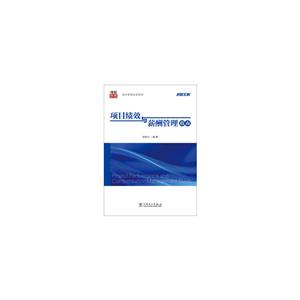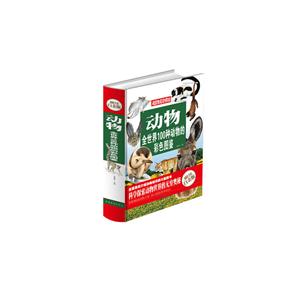轻质夹层板结构的声振耦合理论

|
轻质夹层板结构的声振耦合理论作者:Tianjian Lu,Fengxian 开 本:24cm 书号ISBN:9787030413222 定价:180.0 出版时间:2014-01-01 出版社:科学出版社 |
2.2.11 effects of panel curvature and cabin internal pressurization
2.2.12 conclusions
2.3 double-leaf panel filled with porous materials
2.3.1 introduction
2.3.2 problem description
2.3.3 theoretical model
2.3.4 validation of theoretical model
2.3.5 influence of porous material and the faceplates
2.3.6 influence of porous material layer thickness
2.3.7 influence of external mean flow
2.3.8 influence of incident sound elevation angle
2.3.9 influence of sound incident azimuth angle
2.3.10 conclusion
appendix
mass-air-mass resonance
standing-wave attenuation
standing-wave resonance
coincidence resonance
references
3 vibroacoustics of stiffened structures in mean flow
3.1 noise radiation from orthogonally rib-stiffened plates
3.1.1 introduction
3.1.2 theoretical formulation
3.1.3 effect of mach number
3.1.4 effect of incidence angle
3.1.5 effect of periodic spacings
3.1.6 concluding remarks
3.2 transmission loss of orthogonally rib-stiffened plates
3.2.1 introduction
3.2.2 theoretical formulation
3.2.3 model validation
3.2.4 effects of mach number of mean flow
3.2.5 effects of rib-stiffener spacings
3.2.6 effects of rib-stiffener thickness and height
3.2.7 effects of elevation and azimuth angles of incident sound
3.2.8 conclusions
appendices
appendix a
appendix b
references
4 sound transmission across sandwich structures with corrugated cores
4.1 introduction
4.2 development of theoretical model
4.3 effects of core topology on sound transmission across the sandwich structure
4.4 physical interpretation for the existence of peaks and dips on stl curves
4.5 optimal design for combined sound insulation and structural load capacity
4.6 conclusion
references
5 sound radiation, transmission of orthogonally rib-stiffened sandwich structures
5.1 sound radiation of sandwich structures
5.1.1 introduction
5.1.2 theoretical modeling of structural dynamic responses
5.1.3 solutions
5.1.4 far-field radiated sound pressure
5.1.5 validation of theoretical modeling
5.1.6 influences of inertial effects arising from rib-stiffener mass
5.1.7 influence of excitation position
5.1.8 influence of rib-stiffener spacings
5.1.9 conclusions
5.2 sound transmission through sandwich structures
5.2.1 introduction
5.2.2 analytic formulation of panel vibration and sound transmission
5.2.3 the acoustic pressure and continuity condition
5.2.4 solution of the formulations with the virtual work principle
5.2.5 virtual work of panel elements
5.2.6 virtual work of x-wise rib-stiffeners
5.2.7 virtual work of y-wise rib-stiffeners
5.2.8 combination of equations
5.2.9 definition of sound transmission loss
5.2.10 convergence check for space-harmonic series solution .
5.2.11 validation of the analytic model
5.2.12 influence of sound incident angles
5.2.13 influence of inertial effects arising from rib-stiffener mass
5.2.14 influence of rib-stiffener spacings
5.2.15 influence of airborne and structure-borne paths
5.2.16 conclusions
appendices
appendix a
appendix b
references
6 sound propagation in rib-stiffened sandwich structures with cavity absorption
6.1 sound radiation of absorptive sandwich structures
6.1.1 introduction
6.1.2 structural dynamic responses to time-harmonic point force
6.1.3 the acoustic pressure and fluid-structure coupling
6.1.4 far-field sound-radiated pressure
6.1.5 convergence check for numerical solution
6.1.6 validation of theoretical modeling
6.1.7 influence of air-structure coupling effect
6.1.8 influence of fibrous sound absorptive filling material
6.1.9 conclusions
6.2 sound transmission through absorptive sandwich structure
6.2.1 introduction
6.2.2 analytic formulation of panel vibration and sound transmission
6.2.3 application of the periodicity of structures
6.2.4 solution by employing the virtual work principle
6.2.5 model validation
6.2.6 effects of fluid-structure coupling on sound transmission
6.2.7 sound transmission loss combined with bending stiffness and structure mass: optimal design of sandwich
6.2.8 conclusions
appendices
appendix a
appendix b
appendix c
references
工业技术 一般工业技术
在线阅读
- 最新内容
- 相关内容
- 网友推荐
- 图文推荐
上一篇:彩色电视机维修一月通-(第2版)
下一篇:电气控制与PIC创新实训教程
零零教育社区:论坛热帖子
| [高考] 2022 西安电子科技大学《软件工程》大作业答案 (2022-04-25) |
| [家长教育] 孩子为什么会和父母感情疏离? (2019-07-14) |
| [教师分享] 给远方姐姐的一封信 (2018-11-07) |
| [教师分享] 伸缩门 (2018-11-07) |
| [教师分享] 回家乡 (2018-11-07) |
| [教师分享] 是风味也是人间 (2018-11-07) |
| [教师分享] 一句格言的启示 (2018-11-07) |
| [教师分享] 无规矩不成方圆 (2018-11-07) |
| [教师分享] 第十届全国教育名家论坛有感(二) (2018-11-07) |
| [教师分享] 贪玩的小狗 (2018-11-07) |






